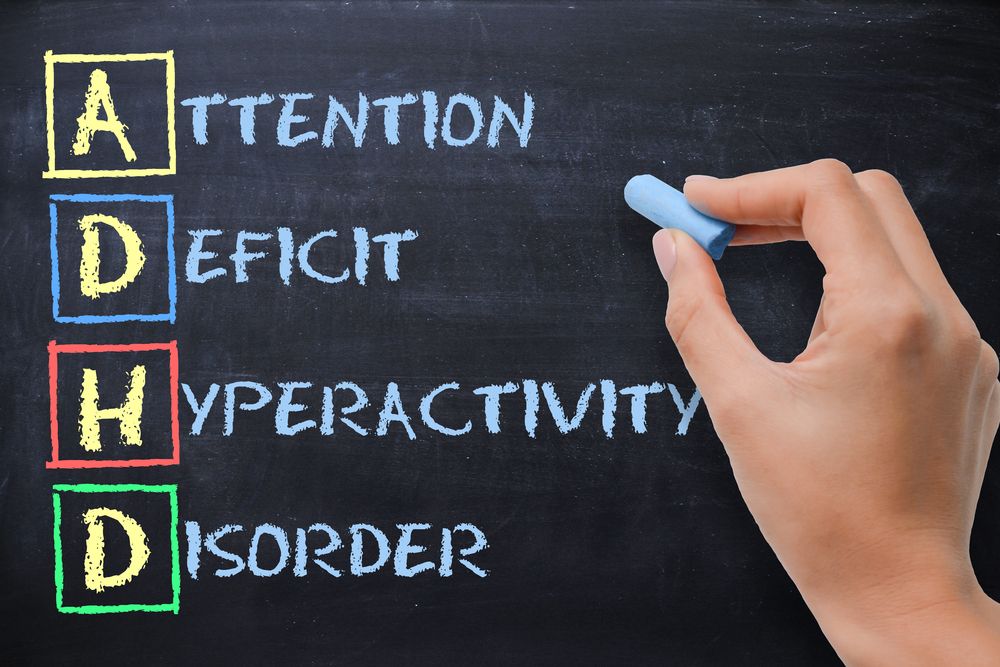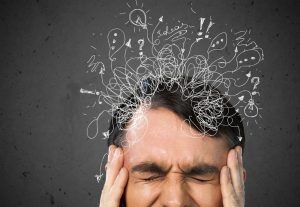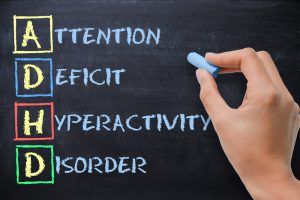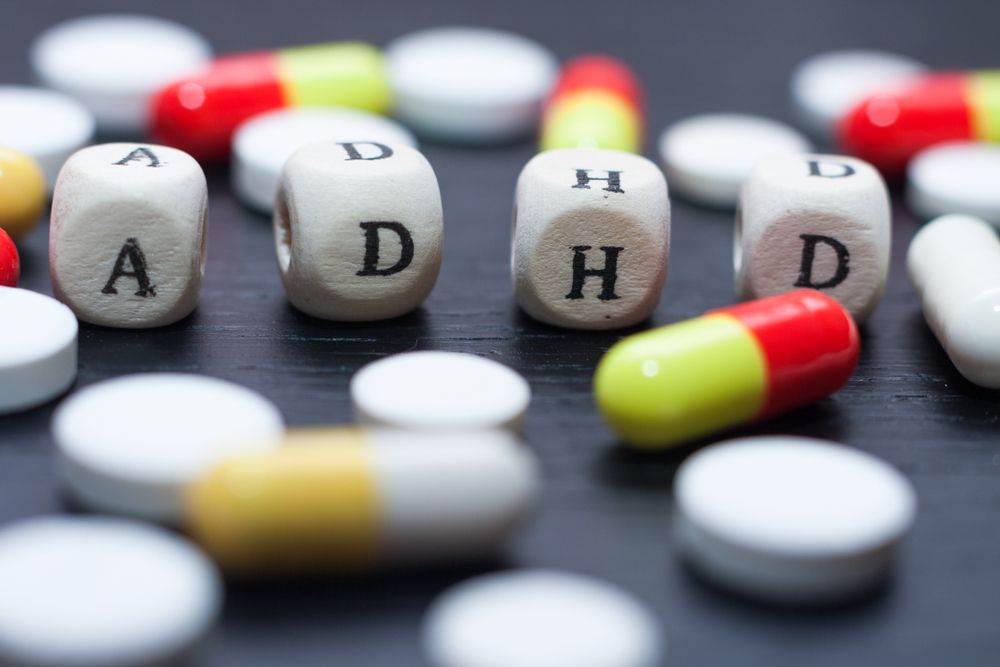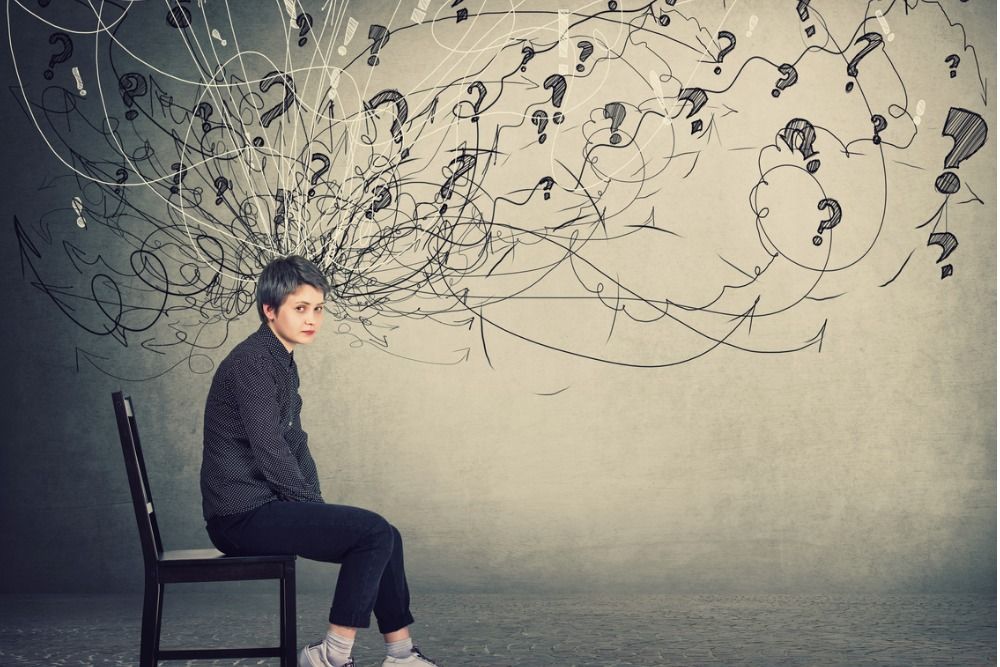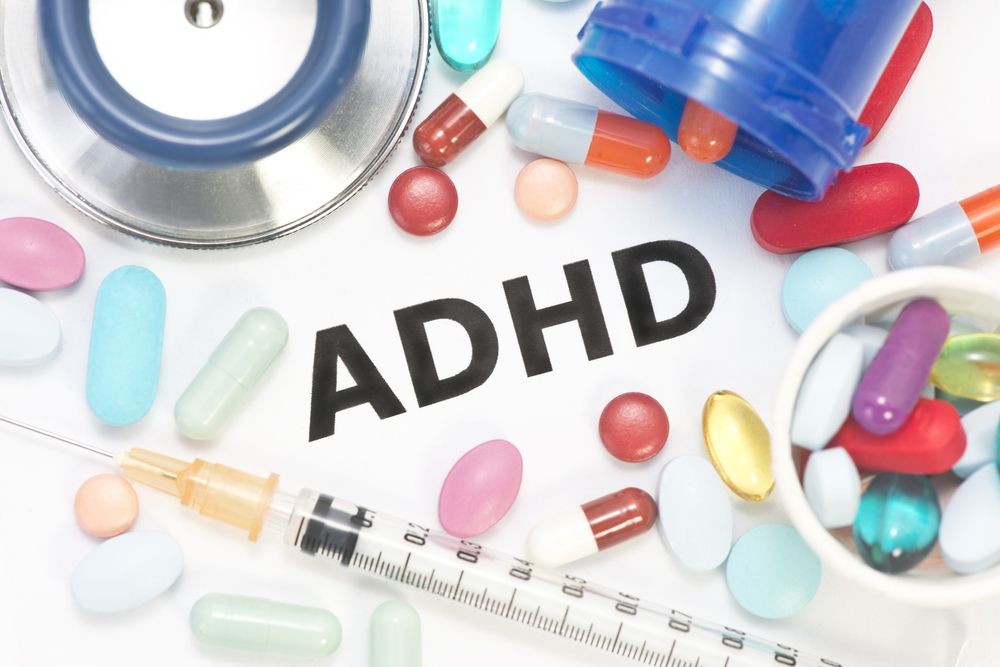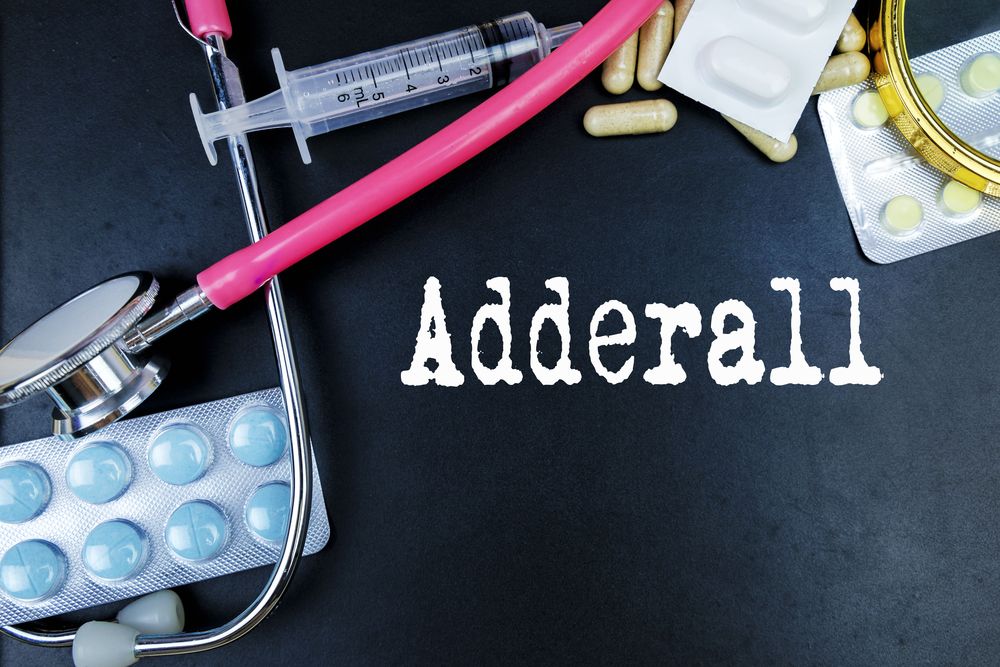Attention deficit hyperactivity disorder (ADHD) is neurobehavioral disorder that causes people to struggle with paying attention, being hyperactive, and acting impulsively.
Some people with ADHD have symptoms related to inattention, while others have symptoms related more to hyperactivity. Some have a combination of both types of symptoms. (Learn More)
There are many symptoms of ADHD, and everyone’s symptoms may be different. Symptoms related to inattentive-focused ADHD may include daydreaming and being unable to pay attention or listen. Symptoms related to inactivity may include the inability to sit still, a habit of interrupting, and making excessive noise while completing activities. (Learn More)
Because of the many struggles those with ADHD face, therapy may be helpful in fostering confidence and improved life skills. Lifestyle changes, such as exercise and an improved diet, may also help. Many doctors consider medication to be the most effective treatment option for ADHD. (Learn More)
Stimulant drugs, including Adderall, are considered the best option for the treatment of ADHD. By affecting neurotransmitters (the brain’s chemical messengers), these medications increase brain activity and may improve focus. However, these drugs can be habit-forming and aren’t ideal for everyone due to their side effects. (Learn More)
Nonstimulant drugs, like atomoxetine, also affect neurotransmitters that affect cognitive function and focus. These drugs are not habit-forming, but they do have side effects and carry an FDA warning about possibly causing an increased risk of suicidal thoughts or actions in children, teens, and young adults. (Learn More)
Antidepressants work in a different way, affecting neurotransmitters that regulate mood and happiness levels. While antidepressants don’t target attention or cognitive-related symptoms, they may help with hyperactivity and impulse control. Antidepressants also have a black-box warning from the FDA related to possibly increasing the risk of suicidal thoughts or actions. (Learn More)
What Is Attention Deficit Hyperactivity Disorder (ADHD), and How Common Is It?
Attention deficit hyperactivity disorder (ADHD) is a neurobehavioral disorder that affects approximately 8.4 percent of children and 2.5 percent of adults in the U.S. It’s thought to be the most common mental health problem among children. It’s possible as well that the estimates of adults who have the disorder may be low because many adults don’t realize they have ADHD and don’t get treatment for it.
The actual cause of ADHD is not fully understood, but the disorder is characterized by being unable to pay attention or control impulses. People with ADHD may be restless and appear to be constantly in motion or active in some way.
According to the National Institute of Mental Health (NIMH), three behavioral patterns indicate ADHD:
- Inattention (difficulty focusing or paying attention)
- Being overly active (hyperactive)
- Acting without thought or logic (impulsive)
According to the Diagnostic and Statistical Manual of Mental Disorders, 5th Edition (DSM-5), there are three different types of ADHD:
- Inattentive, which is displaying primarily inattentive symptoms associated with ADHD
- Hyperactive-impulsive, which is displaying primarily the hyperactive-impulsive behaviors associated with ADHD
- Combined, which is displaying both the inattention and hyperactive-related behaviors associated with ADHD
These different types of ADHD are called different presentations of the disorder.
What Are the Symptoms of ADHD?
Attention deficit hyperactivity disorder is a complex disorder. Each person may experience different symptoms or a layering of symptoms.
Symptoms of the inattentive presentation of ADHD may include the following:
- Difficulty focusing or paying attention to what is happening around them
- Difficulty listening to others
- Difficulty finishing projects
- Easily distracted
- Finding it nearly impossible to listen to or follow directions
- Daydreaming
- Disorganization
- Forgetful in daily errands and activities
- Often losing items
- Appearing careless, rudely inattentive, or “spaced out”
Symptoms of the hyperactive/impulsive presentation of ADHD may include the following:
- Always in motion or moving
- Fidgeting
- Extreme difficulty sitting still or waiting
- Interrupting others
- Jumping into games and conversations out of turn
- Making decisions (sometimes destructive or even dangerous) based on impulse
- Rushing through tasks
- Making errors while rushing
- Making an excessive amount of noise while performing tasks or participating in activities
What Are Treatment Options for ADHD?
Children and adults with attention deficit hyperactivity disorder (ADHD) will likely benefit from counseling and therapy.
The struggles of ADHD can cause feelings of frustration and depression. If left untreated, these feelings can lead to more problems, like long-term depression or self-medicating with drugs or alcohol. Psychotherapy can help to stop the development of secondary mental issues, while other types of therapy (like group therapy or cognitive behavioral therapy) can help to promote self-esteem, a sense of community and accountability, and the development of improved life-coping skills.
Lifestyle changes, like dietary changes and an increased amount of physical exercise, may help to manage ADHD symptoms. Mindfulness-based practices, like yoga and meditation, may also help some people, including children, with ADHD or ADHD symptoms.
Many in the health field consider medication a safe and effective option for the treatment of attention deficit hyperactivity disorder, especially when used in conjunction with counseling.
Stimulant Drugs
The most common prescription drugs used to treat attention deficit hyperactivity disorder are stimulants. These include Adderall (amphetamine), methylphenidate, and dexmethylphenidate.
Most stimulant drugs are available in different strengths, often in both immediate-release (lasting about 4 hours) and extended-release (lasting about 12 hours) formulations.
To understand how these drugs work, it’s helpful to have some understanding of brain behavior.
The brain is made up of neurons — nerve cells separated by small gaps called synapses. Every function of the brain and central nervous system is carried out based on communication between these neurons, which occurs through neurotransmitters — the chemical “messengers” of the brain.
A neuron produces a neurotransmitter and then releases it into the synapse space, where it waits to be accepted to the next neuron and attached to the receptor site where it can relay its chemical message. Afterwards, the unused portion of the neurotransmitter is reabsorbed by the original neuron that produced it.
One theory about ADHD is that needed neurotransmitters are being reabsorbed too quickly, and some of the brain’s neuron network isn’t sending or receiving messages adequately or quickly enough.
These stimulant drugs work by affecting particular neurotransmitters — namely, dopamine and norepinephrine — that play important roles in attention regulation, learning, and behavior. Adderall, for example, increases the release of dopamine and norepinephrine into the synapse gaps and slows the reabsorption of helpful neurotransmitters. In theory, this has the effect of increasing brain activity and boosting awareness and focus on cognitive tasks.
Stimulants have long been the preferred choice of prescribing doctors treating ADHD. They have proven effective in the management of ADHD symptoms.
However, these drugs are highly habit-forming and do may have side effects that may include decreased appetite, irritability, insomnia, and mood swings. They also may increase the risk of more serious issues like heart problems and psychiatric disorders.
All risks and possible side effects should be discussed with your doctor before starting or stopping use of stimulant medication.
Nonstimulants
Nonstimulant drugs like atomoxetine are sometimes used instead of stimulants, or along with stimulants, to treat ADHD.
Atomoxetine affects the same neurotransmitters as stimulants, as it acts as a norepinephrine inhibitor. But it acts differently than stimulants and is generally considered less effective.
While stimulant medications are considered first-line treatments for ADHD, as they are thought to be the most effective, atomoxetine and other nonstimulants are considered second-line medications. They are often used as an alternative for those who don’t tolerate stimulant medications well or those who have a medical history that may interact poorly with stimulant treatment, such as a history of addiction, eating disorders, or heart problems.
Atomoxetine has many side effects as well. It carries a “black-box” warning from the Food and Drug Administration due to users possibly experiencing an increased risk of suicidal thoughts or actions, particularly in children, teen, and young adults.
Antidepressants
Antidepressants may be used alone or with other medications, like stimulants, to treat attention deficit hyperactivity disorder.
These drugs work very differently than the stimulant and nonstimulant medications used to treat ADHD, which affect the neurotransmitters associated with learning in order to boost brain activity. Most antidepressants prescribed for ADHD affect a different neurotransmitter, serotonin, in order to improve a user’s mood and sense of well-being.
While antidepressants aren’t as effective in treating the attention and cognitive-related problems associated with ADHD, they may reduce impulsive and hyperactive behavior, and they are not habit-forming like stimulants.
Their side effects may include insomnia, fatigue, dizziness, and weight gain. Antidepressants also carry a black box warning from the FDA due to users possibly experiencing an increased risk of suicidal thoughts or actions.
References
An Overview of ADHD. (March 28, 2019). Verywell Mind.
Attention-Deficit/Hyperactivity Disorder (ADHD): The Basics. (2016). National Institute of Mental Health.
Attention-Deficit/Hyperactivity Disorder. (December 14, 2018). Centers for Disease Control and Prevention (CDC).
What to Know About ADHD. (November 13, 2018). Medical News Today.
ADHD Treatment. (April 23, 2018). Everyday Health.
The Influence of Diet on ADHD. (September 30, 2016). Psychiatric Times.
Emerging Support for a Role of Exercise in Attention-Deficit/Hyperactivity Disorder Intervention Planning. (October 2013). Current Psychiatry Reports.
Effects of an 8-Week Yoga Program on Sustained Attention and Discrimination Function in Children with Attention Deficit Hyperactivity Disorder. (January 2017). PeerJ.
How Stimulants Work to Reduce ADHD Symptoms. (March 31, 2019). Verywell Mind.
Attention-Deficit Hyperactivity Disorder (ADHD) Stimulant Medications as Cognitive Enhancers. (May 2013). Frontiers in Neuroscience.
Strattera. (2007). Food and Drug Administration (FDA).
Negative Side Effects of Antidepressants. (March 21, 2019). Verywell Mind.
Antidepressants in the Treatment of Attention-Deficit/Hyperactivity Disorder. (1997). Journal of Clinical Psychiatry.
The Difference Between Strattera and Adderall. (May 2, 2019). Verywell Mind.

